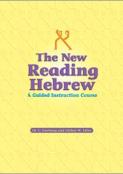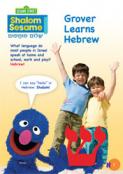- Home
- Play & Learn Home
- Online Enrichment
- Experience Modern Israel
- Israel It's Complicated
- Jewish and Me
- Jewish Holidays Jewish Values
- Jewish Values in Genesis and Jewish Values in Exodus
- Min Ha’aretz
- Our Place in the Universe
- Simply Seder
- The Prophets: Speaking Out for Justice
- Making T'filah Meaningful
- Make, Create, Celebrate
- Yom Haatzmaut Resources
- Hebrew Apps
- About The OLC
- What is the OLC?
- Introduction
- Get Started
- Resources
- OLC Content
- Parent Materials
- See My OLC Classes
- Store
9 WAYS TO CREATE A GREAT JUNIOR CONGREGATION EXPERIENCE
By Edwin R. Frankel
The purpose of Junior Congregation is to give students a chance to participate in a real, child-centered prayer program during which they learn not only how to pray, but the concepts and meanings that make prayer so central to the Jewish heritage.
| Download Printable Version (PDF) |
Below are nine ways to create a dynamic Junior Congregation experience.
1. Build your Junior Congregation program on participants’ knowledge.
When structuring your service, take into account participants’ Hebrew and English reading skills, comprehension skills, and familiarity with both the order of the prayer service and the prayers to be included.
-
Build your program to be age appropriate and to match participants’ abilities and interests.
For example, for preschoolers with no reading skills, you might include only a few simple, key prayers such as Modeh/Modah Ani, Sh’ma, and Mi Chamocha, but lots of discussion, bible stories, and short songs. At the next level you might focus on teaching key prayers by rote while incorporating some familiar songs. By mid-year, as students begin to decipher Hebrew letters, you can shift to reading prayers as a group, then teaching the prayers’ meaning and setting them to music. A Junior Congregation service for grades 4 and up can be led semi-independently by students. A teen weekly service might be run with no adult leadership whatsoever.
-
Incorporate prayers your students are learning in their regular Hebrew classes. Not only will students be able to practice their chanting skills, but they will also experience the practical value of their classroom studies.
2. Give participants a sense of ownership of the service.
Students should feel that the service belongs to them and is shaped by their participation. When students lead a service, they become more invested in its success.
-
Each week, appoint a new leader or team of leaders, or ask for volunteers. Assign parts in advance. Help students build confidence by training them privately. Invite leaders to bring their families to the service.
-
If you have multiple leaders, give each one a role such as “rabbi,” “cantor,” Ark opener, or aliyah honoree. Consider giving students name tags identifying their roles.
-
Let specific classes lead specific prayers. For example, the Alef class may lead the Sh’ma, Bet may lead V’ahavta, and Gimmel the G’vurot.
-
As skills develop, let stronger students take on more responsibilities. For example, if a student previously opened the Ark without reciting a prayer, invite him or her to take on a speaking role. Let more skillful students assist those who have yet to develop these skills.
3. Build group activities into the service.
Group activities strengthen skills while building a sense of community. The more involved children are, the more likely they are to enjoy the service and the less likely they are to disrupt it. In a group setting, individual weaknesses are of less consequence for both the program and the participants.
-
Aim as much as possible for choral singing and recitation. Avoid solos. Many children, perhaps uncomfortable in a t’fillah setting, are not at ease performing individually.
-
Divide participants into groups, give them the material they need, and challenge them to present the weekly Torah portion creatively.
4. Provide variety while maintaining consistency.
Variety in a prayer service promotes interest. Consistency promotes comfort and familiarity. In even the best Junior Congregation service, there is a constant push-and-pull between relying on the known and trying out new tunes, prayers, and activities.
-
Use a consistent core of well-known prayers and tunes. Supplement core prayers with additional prayers that vary from week to week. Consider supplementing with original prayers and blessings written by students.
-
Use energetic and exciting melodies to build excitement (ruah). Consider using the music of Debbie Friedman, Rabbi Shlomo Carlebach, Craig Taubman, and Hasidic melodies.
-
Intersperse Hebrew prayers with English readings.
-
Whether reading in Hebrew or English, vary techniques. Employ unison readings, responsive readings, and consecutive reading (each person reads a sentence or paragraph to be followed by the next reader).

5. Challenge children’s intellect to make worship meaningful.
Challenge children to offer their own interpretations of prayer and rituals. Keep them engaged by making them think and asking them to offer individual insights.
-
Ask questions of personal interpretation so children have a greater grasp of why they are praying. For example, you might ask, Why do you think the Amidah is considered the heart of the prayer service? Why do you think we say the Sh’ma so often? What is your interpretation of why we rise up on our toes three times during the K’dushah?
-
Discuss the themes of the prayers. For example, ask children what they have learned about Shabbat (day of rest, symbol of creation, reminder of the Exodus from Egypt, sign of God’s covenant with the Jewish people). Then, as you recite prayers that relate specifically to Shabbat—for example, Kiddush, V’shamru, Vay’chulu—have the children express the concept highlighted in each prayer.
-
Create an atmosphere in which students are expected to share thoughts. Wait for answers; don’t rush to the next question. Let intellectual involvement be fun.
-
Validate all seriously considered suggestions and thoughts. Validate “wrong” answers by trying to find what is “right” in them. Reward responses, for example, by repeating students’ words as you move to other concepts.
6. Create a prayer space that supports the service.
Help children feel comfortable and supported by creating an intimate, warm prayer space. Any room can be transformed into a chapel. Simply set up a place to hold a Torah scroll, a place to read comfortably from the Torah, and a place from which leaders will lead the service.
-
Arrange seating to maximize student involvement. Seating in the round is conducive to discussion. Arranging chairs in small groups is helpful when groups of children are working as units. Auditorium-style seating encourages choral participation. Floor seating is appropriate for an informal discussion or game.
-
Use a room’s décor as a tool for the program. For example, use prayer posters with words or pictures to focus an entire group when teaching new prayers. Use religious objects to link prayers to Jewish concepts. For example, link a mizrah, a sign that shows which direction is east, with the prayer we say when we take the Torah from the Ark, “From Zion shall the Torah go forth.”
7. Open Junior Congregation to adults, especially parents.
Adults can help model appropriate behavior in a service by joining in readings, singing, and discussions. Their presence helps show students that the Junior Congregation service “counts” and that prayer is important at all ages.
-
Invite adults to participate in a Torah skit using a book of plays—such as Sedra Scenes or Parashah Plays—to tell or read a story related to the Torah portion or to present divrei Torah or divrei t’fillah (explanations of the Torah portion or a prayer).
8. Keep participation records and offer awards.
Children love acknowledgement of their efforts. Reward regular attendance and participation in Junior Congregation.

-
Recognize all legitimate attempts to participate by offering immediate recognition or awards. Commend children who help one another.
-
Offer specific praise. For example, you might say: “You read that portion with real feeling” or “Even without looking in the siddur, I could recognize how well you pronounced every word of that prayer.”
-
Establish attendance goals, maintain attendance records, and reward students who reach them. Examples of rewards are: movie tickets, museum trips, theater trips, gift certificates, Jewish books, and ritual objects such as an embroidered kippah. A group goal might that for every five weeks with an average attendance of 75% or better, there will be a pizza party on Sunday after religious school class.
-
Offer bagels, cookies, or other snacks and treats regularly after Junior Congregation as an ongoing motivation for attendance.
9. Introduce new learning at Junior Congregation.
In addition to prayer fluency and familiarity, make it a goal to have participants come away from each service having learned something new about Torah or prayer.
-
Invite children to explain the weekly Torah portion to the congregation. Show them how to scan the Torah portion and find a theme. Advise them how to pick a few verses that relate to the theme and to find additional commentaries on those verses.
-
Train, or ask the Cantor to train, children to read Torah during the service.
-
Teach, or have a parent teach, a song or dance to incorporate into the service. For example, when chanting Mi Chamocha (the Israelites’ prayer of praise after crossing the Sea of Reeds), invite students to move rhythmically in the way they imagine water flows.
Finally, build on successes to establish a momentum of positive prayer experiences. Review accomplishments and analyze both successes and failures. By identifying and replicating techniques that have worked, you will build a vibrant and meaningful Junior Congregation.
Edwin R. Frankel is Ritual Director at Agudas Achim, Bexley, Ohio. He can be reached at edfrankel@earthlink.net












